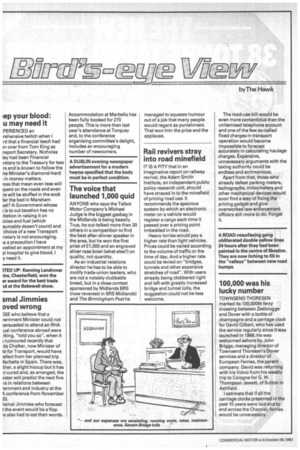Rail revivers stray into road minefield
Page 22

If you've noticed an error in this article please click here to report it so we can fix it.
IT IS A PITY that in an
imaginative report on railway revival, the Adam Smith Institute, an independent public policy research unit, should have strayed in to the minefield of pricing road use. It recommends the specious system by which an electronic meter on a vehicle would register a cargo each time it passed over a pricing point imbedded in the road. Heavy lorries would pay a higher rate than light vehicles. Prices could be varied according to the volume of traffic or the time of day. And a higher rate could be levied on "bridges, tunnels and other expensive stretches of road". With users already being clobbered right and left with greatly increased bridge and tunnel tolls, the suggestion could not be less welcome. The road-use bill would be even more contentious than the unitemised telephone account and one of the few so-called fixed charges in transport operation would become impossible to forecast accurately in calculating haulage charges. Expensive, unnecessary arguments with the taxing authority could be endless and acrimonious. Apart from that, those who already defeat parking meters, tachographs, mileometers and other mechanical devices would soon find a way of fixing the pricing gadget and give overworked law-enforcement officers still more to do. Forget it.




























































































